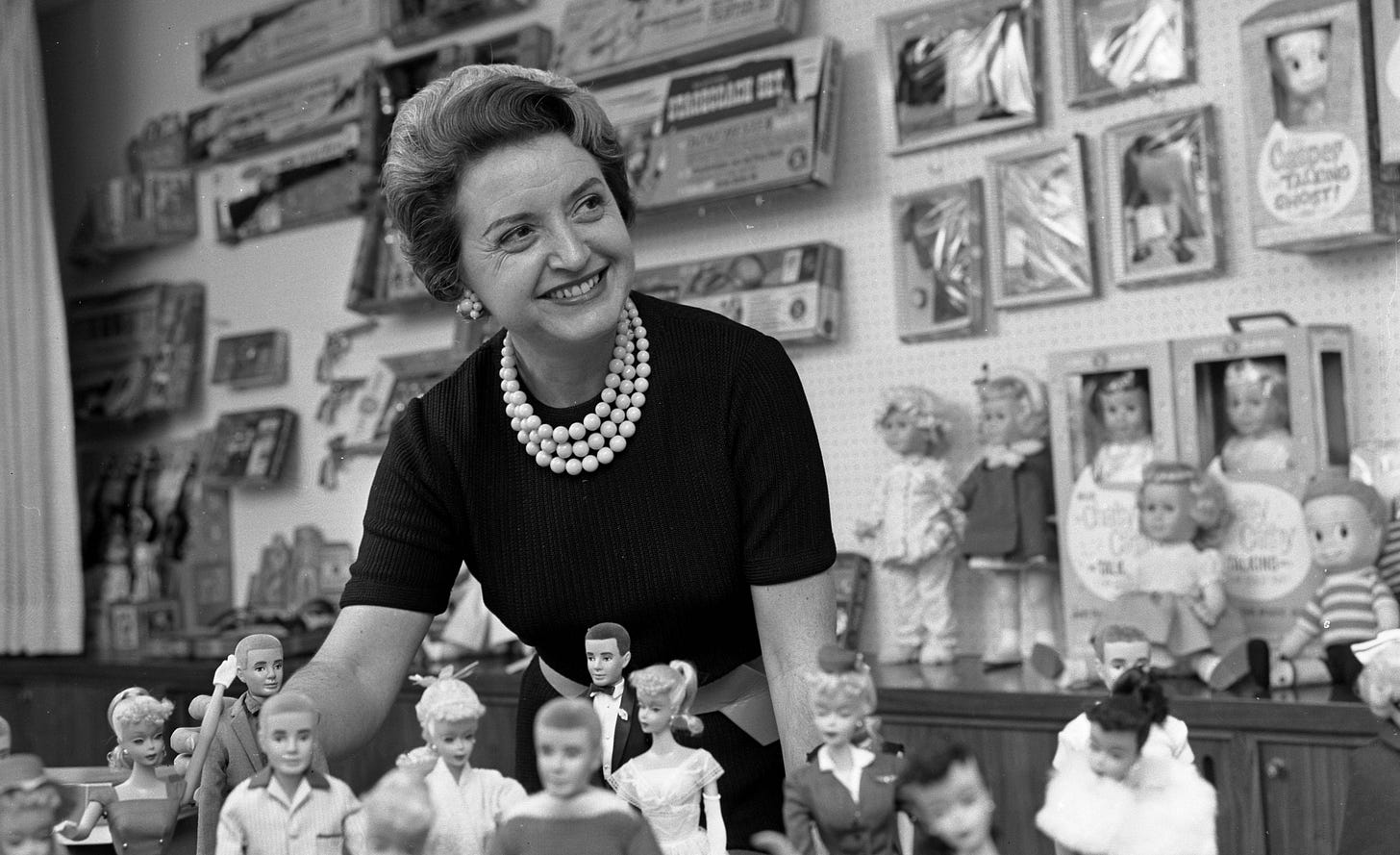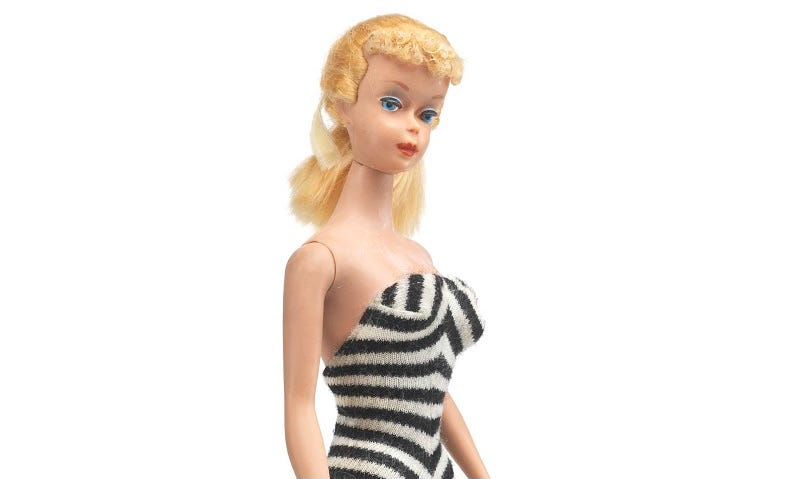A star was born in New York City. Donning a zebra-striped maillot and stiletto heels, it was clear that she meant business. What wasn’t clear was just how popular she’d be. This week in time, Mattel, Inc. displayed the world’s first Barbie doll at the American Toy Fair, launching one of the best-selling toys in history.

Barbie’s Mom
Barbie’s story began in Denver, Colorado with Ruth Handler — the visionary behind the doll. In 1945, Ruth, her husband, Elliot Handler, and his friend Harold Matson started a small business out of a garage. The new company, Mattel (ever heard of it?), initially developed picture frames, but soon found that they could make dollhouse furniture out of the leftover wood. The dollhouse furniture was such a success that the company dropped the picture frames to focus exclusively on toys. Now all they needed was a breakout toy to put the company on the map.

The German Barbie
Believe it or not (but believe it), the inspiration for Barbie came from a risqué German doll, called Bild Lilli. Sold in tobacco shops and adult-themed toy stores, the German Lilli doll was definitely not tailored toward kids. In comic strips, Lilli was portrayed as sexual and irreverent. In one edition, a police officer told Lilli that her two-piece swimsuit was illegal, to which she replied, “Oh, and in your opinion, which part should I take off?” (you know, normal kid stuff). Though the doll was initially intended to be a gag gift for adults, it surprisingly became a popular kids toy.
While Lilli was hitting the shelves, Ruth Handler happened to be looking for a new toy to sell. Ruth noticed that her daughter, Barbara, ignored her baby dolls to play with paper dolls of adult women. In a later interview, Ruth explained, “every little girl needed a doll through which to project herself into her dream of her future”. Everything would change when Ruth took a trip to Switzerland, where she saw the Lilli doll for the first time. Ruth bought more than a dozen Lillis (try explaining that to customs…) and brought them back to the U.S intent on creating a doll of her own.

The Launch
Ruth threw everything she had at her new idea, convinced that it would change the toy market. She named her new doll Barbie (after her daughter Barbara) and hired Ernest Dichter, a psychologist and corporate consultant, to run focus groups and find out what people liked and didn’t like about the doll. The results were clear: girls loved Barbie. According to Dichter’s wife, girls wanted “someone sexy looking, someone that they wanted to grow up to be like. Long legs, big breasts, glamorous.” Dichter even suggested enlarging Barbie’s breasts (weirdo).
Mothers, on the other hand, were not fans of the prototype. But Dichter had a solution for that. He encouraged Ruth to market Barbie as a way of teaching girls how to dress and accessorize. Some argued that this wouldn’t be enough to assuage mothers who were concerned about the doll’s figure. Undeterred, Ruth poured hundreds of thousands of dollars into a national advertising campaign and premiered Barbie for the first time at the American Toy Fair in New York City.
The skeptics were right...at least initially. Barbie belly-flopped into the toy market. Anxious, Ruth cut back production. But she should have trusted her gut because that summer, demand for Barbie skyrocketed as kids started their school break. By the end of the first year, Mattel had sold 300,000 Barbies.
And Barbie Lived Happily Ever After
Barbie’s life was about to change. By 1961, she had a hunky honey named Ken (named after Ruth’s son…yeah, a little weird) and three years later, she also had a best friend and a little sister.
Despite Barbie’s success, the doll’s reception is still mixed today. On the one hand, she provided an alternative to traditional gender roles. Barbie has basically held every job — from airline stewardess to astronaut to President of the United States. But the doll’s figure aroused controversy from day one, with critics claiming that Barbie fosters a negative body image for young girls. According to the calculations of one academic, the chances of a woman having Barbie’s figure are less than 1 in 100,000. Controversial or not, it’s hard to dispute the success of Ruth’s vision. Today, Barbie sales exceed $1 billion annually.
Want to dive deeper into this topic? Feel free to explore some of the sources we used to put this together!
Barbie and Ruth (pages 103-118) by Robin Gerber
Biography of Ruth Handler, Inventor of Barbie Dolls by Mary Bellis
The Barbie Doll's Not-for-Kids Origins by Jennifer Latson
Ruth Handler, Whose Barbie Gave Dolls Curves, Dies at 85 by Sarah Kershaw
The Barbie doll makes its debut by History.com editors
…and the following Britannica article: Barbie




